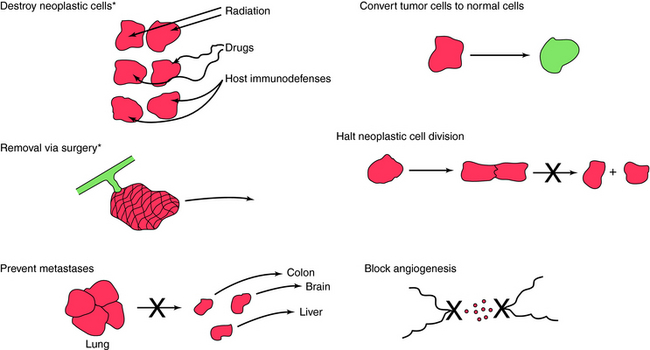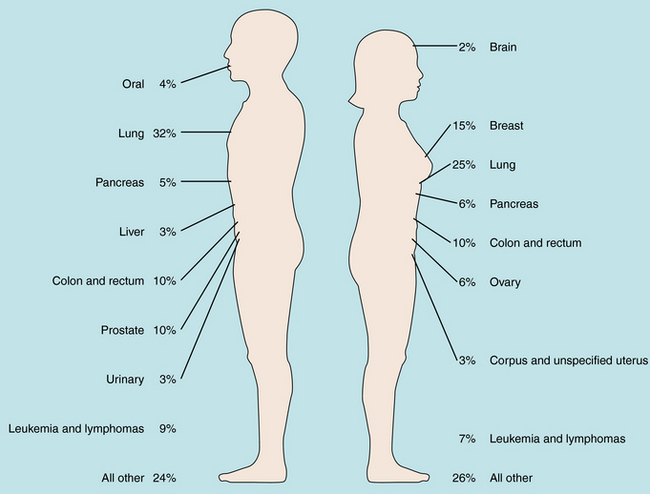Chapter 53 Principles of Antineoplastic Drug Use
One of the fundamental advances made in oncology in the last few decades is the recognition that cancer is a genetic disease. This does not mean that all cancers are inherited (although numerous genetic diseases are associated with a predisposition to cancer), but rather that neoplastic cells have an altered genetic content. This was first recognized in leukemias, which were all found to be associated with an abnormal karyotype. Eventually it was noted that most malignant cells have chromosomal rearrangements, and even cells with apparently normal karyotypes can almost always be found to have definable abnormalities (e.g., translocations, deletions).
The generally accepted approach in the therapy of neoplastic diseases (Fig. 53-1) remains the removal or destruction of the neoplastic cells while minimizing toxic effects on non-neoplastic cells. It has been a long-standing question whether drugs effective against one type of neoplasm should be effective against all types. Clinical experience, however, has shown a wide range of drug activities among different types of tumors (sarcoma, carcinoma, leukemia, and lymphoma) and among tumors in different anatomical locations (breast, colon, and lung). Therefore interest has focused on treating each of the more than 100 clinically important forms of cancer as distinct diseases. Some of the therapeutic approaches listed in Figure 53-1 are not available for clinical use but represent experimental approaches that are under study. For example, drugs that function specifically to return neoplastic cells to normal differentiating cells and drugs that prevent metastases are not available or are highly experimental.
It is of interest to compare the tumor types in which therapy has been aided greatly by antineoplastic drugs with the leading causes of cancer mortality (Fig. 53-2). Unfortunately, chemotherapy is only minimally effective in management of the most common forms of neoplastic diseases. Overall, carcinoma of the lung accounts for the greatest number of cancer deaths in men and women, and although chemotherapy can produce objective responses, it is not curative in this setting. Thus, despite progress, there is still a great need for more effective chemotherapy for the major neoplastic diseases.
One of the difficulties in treating neoplastic diseases is that the tumor burden often is excessive by the time the diagnosis is made. This is shown in Figure 53-3, where the number of cells in a typical solid tumor is shown versus time, with 109 cells roughly equivalent to a volume of 1 cubic centimeter, and representing the minimum size tumor that can usually be detected. It takes approximately 30 doublings for a single cell to reach 109 cells. On the other hand, it takes only 10 additional doublings for 109 cells to reach a population of 1012 cells, which is no longer compatible with life. The significance of a large number of cells already established at the time of detection becomes readily evident, with 1012 to 1013 tumor cells leading to death. Thus by the time a tumor is detected, only a small number of doublings are required before it is fatal. Of course, not all tumor cells are cycling, so no meaningful predictions about longevity can be made purely on the basis of doubling times. Also, doubling times









